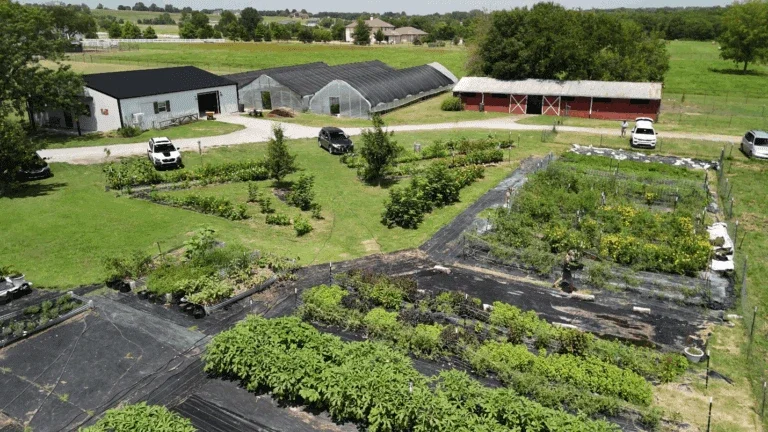Climate change is no longer a distant threat — it is transforming lives, reshaping economies, disrupting ecosystems around the world, impacting lives and livelihoods, and posing serious risks across economies and livelihoods globally. Yet the global framework meant to drive climate action — the Paris Agreement, operationalized through the Nationally Determined Contributions (NDCs) — is not delivering as intended. With the third round of NDCs (3.0) due in 2025 and the centre of attention at the upcoming Climate Summit in Brazil, it is good to reflect on how the process can be fixed.
The Initiative for Climate Action Transparency (ICAT) supports developing countries in building the transparency frameworks needed to develop and implement effective climate policies, attract finance, and meet international commitments under the Paris Agreement. Through direct engagement with national institutions in over 50 countries across Africa, Asia-Pacific, Latin America, and the Caribbean, ICAT has witnessed firsthand frustrations among experts and officials involved in climate action in developing countries that have seen little progress during earlier rounds of NDCs (1.0 and 2.0) that remain largely unimplemented and underfunded.
In light of this experience, ICAT is calling for a more integrated approach to the monitoring and evaluation of climate action to address the underlying challenges and opportunities associated with translating NDCs into actionable, measurable, and finance-ready strategies. When digging into the lack of progress in the NDC process, a series of persistent disconnects were revealed. Addressing these disconnects offer significant opportunities, both for developing countries and the global community.
Transparency as a key to unlock integration
A key challenge lies in the gap between climate commitments as reflected by a country’s NDCs and development planning. While environment ministries typically lead the development of NDCs, successful implementation depends on coordinated action across powerful sectoral ministries — such as energy, transport, agriculture, and finance. These ministries often hold more influence and control over public investment decisions but are not consistently engaged in climate planning or delivery. Weak institutional mechanisms for cross-ministerial coordination further compound the problem, leaving NDCs siloed within environment ministries. As a result, many commitments remain aspirational rather than integrated into national development priorities and public budgets.
Critically, if a ministry such as Energy does not “own” the climate targets relevant to its sector, it will not translate them into policy frameworks, investment strategies, or project pipelines. Without this ownership, there is no credible pathway for transforming NDC ambitions into investable propositions that can attract finance. In this vacuum, climate finance tends to flow toward standalone, easier-to-fund projects — often shaped by donor priorities — rather than those rooted in national climate strategies. The result is a widening gap between climate finance flows and the delivery of NDC targets. Transparent processes, from planning and target setting to monitoring progress during implementation, can help overcome these challenges and unlock the integration required for an effective engagement of sectors thus enabling climate finance to connect to measurable impact on the ground.
This challenge is, however, compounded by the way financial institutions — whether multilateral banks, development finance institutions, or private investors — engage with climate action. Their focus is often on funding discrete, bankable projects, rather than aligning investments with the national climate priorities set out in NDCs. These institutions also tend to apply their own monitoring and evaluation (M&E) frameworks, tailored to internal accountability or impact measurement needs, with little connection to a country’s monitoring, reporting and verification (MRV) framework. A more integrated approach, with project M&E fully aligned with national MRV processes, would build national ownership, increase policy coherence, and allow tracking the collective progress toward national and global goals. By insisting that funded projects be anchored in NDCs and that monitoring projects use indicators from programmatic results frameworks, financial institutions can play a catalytic role — pushing national ministries to coordinate across sectors, strengthen alignment, and embed climate action within the core of development planning.
But the issue runs deeper. When key line ministries are not meaningfully engaged in the NDC process, they are unlikely to develop the policies, investment plans, or regulatory frameworks needed not only to translate commitments into actionable programmes, but also to reduce the risk premium. Without these sector-specific strategies, there is little for funders — whether public or private — to assess, support, or finance. Only when sectoral ministries engage, can there be credible pipelines of projects and policy reforms that can attract investment. This can create a self-reinforcing cycle: Once NDCs can attract funding because they are grounded in the operational realities of sectoral planning, sectors will be engaged because they see strong incentives to align with national climate goals.
A further challenge, however, lies in a lack of systematic evaluation of performance. While many countries have established NDC tracking systems, their use is often limited to reporting progress against indicators rather than for systematic evaluation of the implementation experience. As a result, when countries prepare new NDCs, they rarely draw on structured assessments of what worked, what didn’t, and why. This represents a critical missed opportunity for learning. Without embedding evaluation into the NDC cycle, the Paris Agreement’s ratcheting mechanism — designed to strengthen NDC ambition over time based on experience — cannot function as intended. Instead of building on past successes or course-correcting based on challenges, countries risk repeating the same implementation gaps, with limited gains in ambition or effectiveness.
Bridging these disconnects is not optional. It is essential for transforming climate ambition into real-world outcomes.
ICAT’s work across more than 50 countries has underscored a central insight: national monitoring, reporting and verification should not be treated as afterthoughts in the climate policy cycle, but as an integral component that shapes strategy, unlocks finance, and drives implementation.
Many governments approach monitoring and evaluation as compliance exercises — designed primarily to fulfill reporting obligations — rather than as tools for learning, coordination, and investment alignment. If countries embed robust M&E systems within their NDC processes, they are better positioned to translate climate targets into actionable investment plans, articulate credible results to funders, and adapt more effectively in response to challenges.
By bringing M&E practitioners into the core of climate action planning processes — working in tandem with finance and policy actors, rather than in parallel — developing countries can build dynamic, forward-looking MRV frameworks that are co-owned by sectoral ministries, aligned with national development priorities, and linked to financing strategies. These frameworks should go beyond tracking emissions and evaluate the effectiveness and efficiency of climate actions — providing the insights needed to inform future NDCs, strengthen integration, and build trust with funders. Supporting this transformation is essential to turn climate ambition into measurable progress and finance-ready strategies.
The Way Forward: Bridging the Gap Between Evidence and Investment
Against this backdrop, professionals working in climate evidence, evaluation, and learning have a critical role to play — not simply as auditors of past efforts, but as enablers of forward-looking, transformational change. To meet the scale and urgency of today’s climate challenge, they must reimagine evaluation as a strategic function that informs decisions, shapes investments, and drives systemic impact — they must engage in national NDC processes.

Supported by The Rockefeller Foundation, more than 20 global organizations have issued an Invitation to Take Action — a shared blueprint to reform how climate evidence is produced, shared, and applied. The message is clear: evaluation must be embedded from the outset into climate policy, planning, and financing — not retrofitted as an afterthought.
ICAT has joined this call to action. Our commitment stems from deep, practical experience: we have seen firsthand how countries struggle to move from climate ambition to implementation without the right systems for evidence, learning, and accountability. ICAT recognizes that evaluation must no longer be treated as a technical afterthought. It must become a strategic driver of planning, investment, and course correction. By supporting countries to embed robust, integrated M&E systems into their NDC processes, ICAT aims to build trust, unlock finance, guide more effective policymaking, and strengthen national ownership. Through this call for action, we join others in urging funders, development partners, and policymakers to work together — to ensure that evaluation serves not just to measure progress, but to power it.



